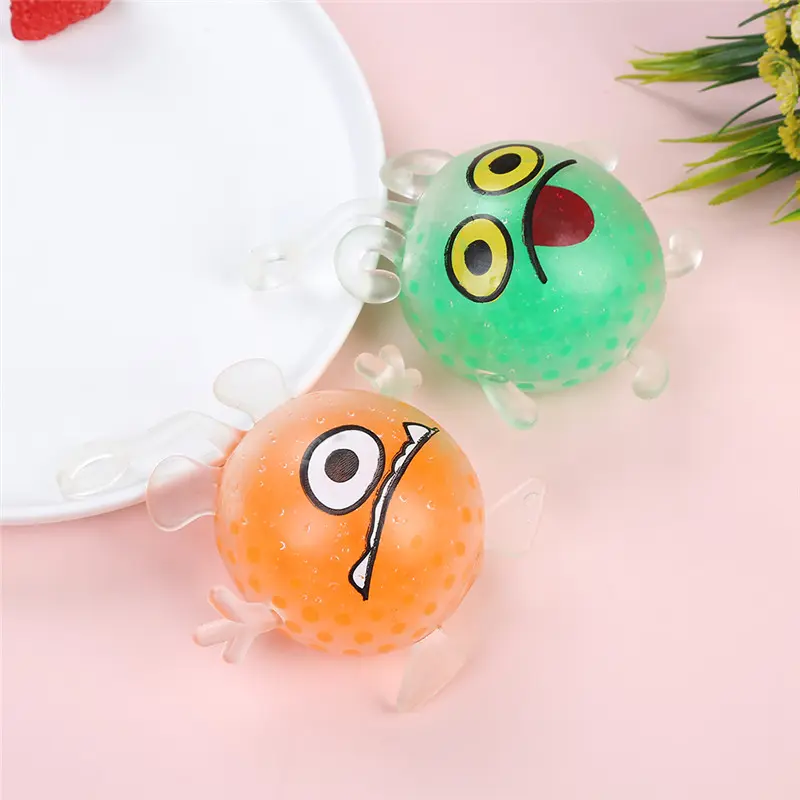Performance requirements of TPR toy materials: building the cornerstone of safety and quality
In today’s global market, the toy industry is booming, and TPR (thermoplastic rubber) materials have become one of the important choices in the toy manufacturing field due to their unique properties and wide application. Especially for international wholesale buyers, it is crucial to understand the performance requirements of TPR toy materials.
1. Overview of TPR toy materials
TPR material is a thermoplastic elastomer based on SBS (styrene-butadiene-styrene block copolymer) and modified by blending with processing oil and other additives. It combines the processing convenience of plastics with the elastic properties of rubber and is an ideal toy manufacturing material. TPR materials not only have good flexibility, wear resistance and fatigue resistance, but also have excellent environmental performance, making them popular in the toy industry.
2. Environmental performance requirements
(I) Non-toxic properties
The non-toxic properties of TPR materials are one of the key factors that make them stand out in the toy industry. The compounding agents used in the TPR material formula are all mild, non-corrosive and non-irritating raw materials, ensuring the non-toxic safety of the material. According to the testing of third-party testing agencies such as SGS, TPR materials meet multiple environmental standards, including but not limited to ROHS, REACH, EN71, FDA, etc. Specifically, TPR materials do not contain halogens, phthalates, polycyclic aromatic hydrocarbons (PAHs), nonylphenol (NP), heavy metals and radioactive elements, bisphenol A and other harmful substances. These characteristics make TPR materials an ideal choice for children’s toys, because toys are often in close contact with children, and non-toxicity is essential to protect children’s health.
(II) International environmental standards
Different countries and regions have different environmental standards for toy products, so TPR materials need to meet specific international standards. For example, the EU’s toy safety standard EN71-3 strictly limits the content of heavy metals in toy materials. TPR materials need to fully consider these environmental requirements when designing the formula to ensure that the product can smoothly enter the international market.
3. Physical performance requirements
(I) Elasticity and flexibility
TPR materials have excellent elastic properties and can provide toys with good resilience and soft touch. This feature makes TPR toys less likely to deform during use, while providing a comfortable grip and a good user experience. According to different toy design requirements, the hardness of TPR materials can be achieved by adjusting the formula to meet various toy needs from soft to hard.
(ii) Crack resistance
For some soft toys with lower hardness, the crack resistance of TPR materials is particularly important. Selecting the right TPR material can effectively prevent the toys from cracking after processing. In addition, by optimizing the molding process, the risk of cracking caused by stress shrinkage can be further reduced. This not only helps to improve the durability of toys, but also ensures the safety of toys during use.
(iii) Temperature resistance
The temperature resistance of TPR materials is also one of its important physical properties. Generally speaking, TPR materials have a wide temperature resistance range and can adapt to different use environments. Under normal circumstances, TPR materials can withstand certain temperature changes, but the specific temperature resistance will vary depending on the formula and hardness. For some toys that need to be used in high or low temperature environments, such as outdoor toys or seasonal toys, it is crucial to select TPR materials with appropriate temperature resistance.
(iv) Tensile and tear properties
Some toy products have high requirements for the tensile and tear properties of TPR materials. For example, some toy parts that need to withstand large tensile forces, such as toy joints and connectors, require TPR materials to have good tensile strength and tear strength. By adjusting the formula and process, the tensile and tear properties of TPR materials can be improved to meet the specific needs of different toy products.
4. Processing performance requirements
(I) Color matching performance
TPR toys usually have bright and diverse colors, so the color matching performance of the material is required to be high. A qualified TPR brand should have good color powder diffusion performance, which can better color the color powder, so as to achieve bright and uniform color matching effects. This not only helps to improve the appearance of the toy, but also meets the personalized needs of different customers for color.
(II) Spraying, painting and silk-screen printing performance
Most toy products need to be sprayed, painted or silk-screened to achieve a specific appearance effect. TPR materials should have good spraying, painting and silk-screen printing performance to ensure that the paint can be firmly attached to the surface of the material and is not easy to fall off. This requires good matching between the TPR compound and the paint, so when choosing the paint, it should be reasonably selected according to the characteristics of the TPR material.
(III) Adaptability to molding processes
TPR materials have good processing properties and can adapt to a variety of molding processes. It can be processed using thermoplastic molding machines and is suitable for a variety of processing methods such as blow molding, encapsulation, and injection molding. This processing convenience makes TPR materials have a wide range of application prospects in toy manufacturing. In addition, TPR materials do not need to be dried during processing and can be recycled, which not only reduces production costs but also meets environmental protection requirements.
5. International standard requirements
(I) EU standards
The EU’s toy safety standard EN71 is one of the most stringent toy standards in the world. For TPR toy materials, it is necessary to meet a number of EN71 requirements, including physical and mechanical properties, flame retardant properties, and toxicological properties. For example, EN71-1 specifies the physical and mechanical performance requirements of toys, including sharp edges and corners, small parts tensile strength and pressure testing, etc. TPR toy materials need to ensure that there will be no dangerous situations such as sharp edges or small parts falling off under normal use and foreseeable abuse. In addition, EN71-2 has strict regulations on the flame retardant properties of toys, requiring that toys can meet specific burning speeds and self-extinguishing times when burning. TPR materials need to pass relevant tests to ensure their safety in emergency situations such as fires.
(II) American standards
The American toy safety standard ASTM-F963 is also one of the important toy standards in the world. The standard makes detailed provisions on the physical properties, chemical properties and labeling requirements of toys. TPR toy materials need to meet the relevant requirements of ASTM-F963 to ensure that the products can be sold smoothly in the US market. For example, ASTM-F963 strictly restricts chemical indicators such as heavy metal content and phthalate content of toys. In addition, the standard also puts forward clear requirements for the labels and warnings of toys to protect consumers’ right to know and use safety.
6. Advantages and applications of TPR toy materials
(I) Advantages
TPR materials have many advantages in toy manufacturing. First, its environmentally friendly and non-toxic properties make it an ideal choice for children’s toys. Secondly, TPR materials have excellent physical properties, such as elasticity, flexibility, crack resistance, etc., which can meet the design requirements of different toy products. In addition, TPR materials have excellent processing performance, can adapt to a variety of molding processes, and do not need to be dried, can be recycled, and reduce production costs. Finally, TPR materials can meet the requirements of international standards, which helps toy products to enter the international market smoothly.
(II) Application
TPR materials are widely used in the toy industry. It can be used to manufacture various types of toys, such as plush toys, plastic toys, doll toys, toy wheels, pet toys, teethers, etc. In addition, TPR materials can also be used in the manufacture of toy accessories, such as toy joints, connectors, etc. Due to its good coloring performance and spray painting and silk screen printing performance, TPR materials can achieve diversified appearance designs of toys. In short, TPR materials have broad application prospects in the toy industry and can provide toy manufacturers with rich design inspiration and production options.
7. Conclusion
TPR toy materials have been widely used in the toy industry due to their excellent environmental performance, physical properties and processing performance. For international wholesale buyers, it is crucial to understand the performance requirements of TPR toy materials, which not only helps to ensure the quality and safety of the products, but also meets the standard requirements of different countries and regions. By choosing the right TPR material, toy manufacturers can create toy products that are both beautiful and safe to meet the needs of the global market. In the future, with the continuous advancement of technology and the enhancement of environmental awareness, the application of TPR materials in the toy industry will be more extensive, injecting new vitality into the development of the toy industry.
Post time: Jul-16-2025

